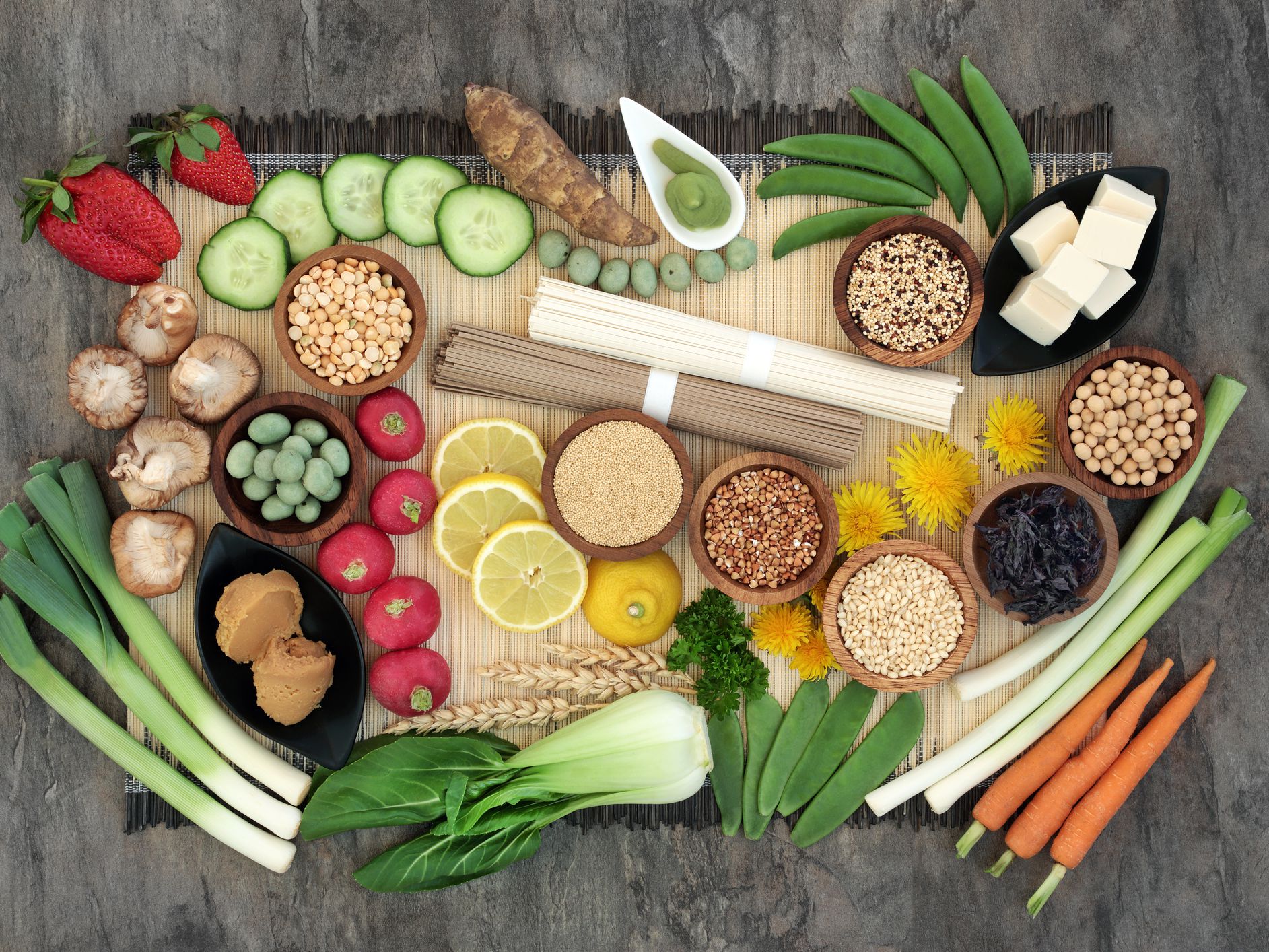
This is much more than just a diet, it is also a way of living your life in balance. Exercise along with rest; socializing along with solitude; adopting sensible sleep habits and keeping a tidy home are all considered part of leading a macrobiotic life. Most people associate macrobiotics with the nutritional regimen that was developed by Japanese writer-philosopher George Ohsawa in the early 20th century. This diet was later popularized in America by Michio Kushi in the sixties and seventies.
Macrobiotics has an emphasis on eating whole grains, along with fresh fruits and vegetables, beans, and largely restricting your intake of meat, dairy products, refined sugars, and processed foods. Macrobiotics aims to provide the body with essential nutrients while limiting the accumulation of toxins within the body. The diet is based on the Eastern concepts of yin and yang, which are the two contrasting universal energies believed to be present in all things, including food. By consuming foods with the least pronounced yin and yang qualities (like whole grains and vegetables), one can supposedly achieve a more balanced condition and initiate a healing process. It’s thought that the standard American diet, with its emphasis on red meat (overly yang) and sugary foods (overly yin), can throw the body out of balance and lead to many diseases, including cancer.
This is much more than just a diet, it is also a way of living your life in balance. Exercise along with rest; socializing along with solitude; adopting sensible sleep habits and keeping a tidy home are all considered part of leading a macrobiotic life. Most people associate macrobiotics with the nutritional regimen that was developed by Japanese writer-philosopher George Ohsawa in the early 20th century. This diet was later popularized in America by Michio Kushi in the sixties and seventies.
Macrobiotics has an emphasis on eating whole grains, along with fresh fruits and vegetables, beans, and largely restricting your intake of meat, dairy products, refined sugars, and processed foods. Macrobiotics aims to provide the body with essential nutrients while limiting the accumulation of toxins within the body. The diet is based on the Eastern concepts of yin and yang, which are the two contrasting universal energies believed to be present in all things, including food. By consuming foods with the least pronounced yin and yang qualities (like whole grains and vegetables), one can supposedly achieve a more balanced condition and initiate a healing process. It’s thought that the standard American diet, with its emphasis on red meat (overly yang) and sugary foods (overly yin), can throw the body out of balance and lead to many diseases, including cancer.
Whole Grains
Approximately 40 – 60% of the diet. Traditionally grains are the base of various cultures throughout the world.
Vegetables
Approximately 20 – 30% of diet.
Beans
Approximately 5 – 10% of diet
Soups
Condiments
Foods to avoid:


Disclaimer: The content of this website is based on research conducted by Carepill Global Private Limited unless otherwise noted. The information is presented for educational purposes only and is not intended to diagnose or prescribe for any medical or psychological condition, nor to prevent, treat, mitigate or cure such conditions. The information contained herein is not intended to replace a one-to-one relationship with a doctor or qualified healthcare professional. Therefore, this information is not intended as medical advice, but rather a sharing of knowledge and information based on research and experience.Carepill Global Private Limited encourages you to make your own health care decisions based on your judgment and research in partnership with a qualified healthcare professional.
Fill Out this Form and we’ll Get Back to You